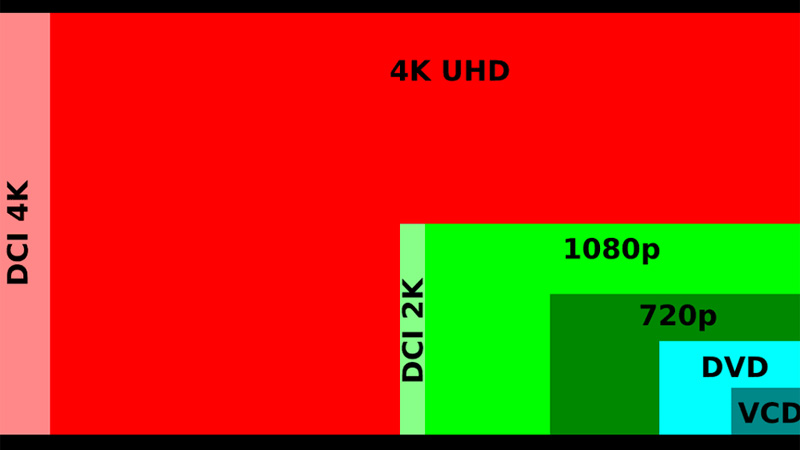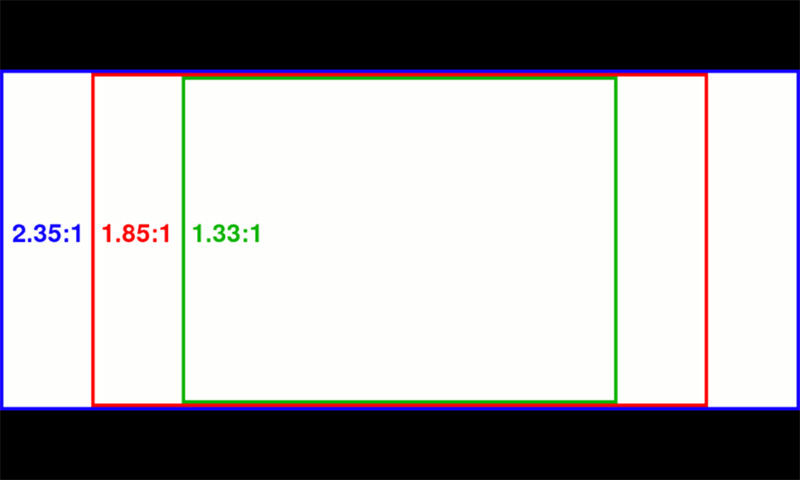
4K Vs UHD in 2024: Comprehensive Comparison
The viewing experience has changed dramatically throughout the years because of the advent of cutting-edge technology. The changes allow us greater viewing pleasure, while filmmakers felt the need to be more attentive to details as eagle-eyed aesthetes are more sensitive to everything they see, whether in cinema or television.
4K and UHD, or Ultra-High Definition, are commonly associated with enhanced viewing pleasure. They are among the latest technologies available to maximize the entire experience on any screen or medium, whether television, silver screen, PC monitor, or gadgets.
Many say there is little difference between them, but is it true? If not, how do they differ, and do the differences ultimately matter? We will discuss 4K and UHD, assess both, and see whether one is better in 2024.
1. What is 4K and UHD
Clarity is the ultimate barometer of excellent resolution. Conventional wisdom is that the higher the image resolution, the better the clarity. That is best for the viewing experience, especially if one is watching fast-paced action in Hollywood movies, which has become common.
4K has been the standard for years for excellent resolution and has almost become synonymous with UHD. But they are not the same.
4K refers to the standard used in cinemas to provide better clarity for any film or material using cinema as the medium. On the other hand, UHD refers to the standard used to give viewers an idea of what to expect when watching a particular film.
In short, the term 4K refers to quality production in a cinematic mode, while UHD refers to the viewer experience when watching a particular medium.
The differences lie in origins. “4K” originates in digital cinema, in the Digital Cinema Initiative (DCI), where filmmakers want to emphasize clarity and clarity to enhance viewing pleasure by providing standard pixels for projecting the film material. The standard pixels for 4K are 4096×2160.
UHD is about resolution and originated from HD or High-Definition. HD has a resolution of 1920×1080. A UHD has 3840×2160. From where things stand, pixel-wise, there is a vital difference between 4K and UHD.

2. 4K vs UHD: A Comprehensive Comparison
The choice between a 4K or a UHD will ultimately depend on various factors, including the material you watch and whether you are watching from a DVD, cable, streaming service, or regular channels in your locality.
- The Case for 4K
4k has a higher resolution because of the higher pixels. Its main advantage is that, due to the higher number of pixels, it has a broader range and can support various materials operating on several aspect ratios.
For instance, some films use “scope” and “flat” ratios. Scope has an aspect ratio of 2.39:1, while flat has 1.85:1. Scope requires higher pixels and has become the aspect ratio of choice by an increasing number of filmmakers. However, whether a film has a scope or flat ratio, the incredible viewing experience will still be the same.
And since 4K has higher pixels than UHD (or “4K UHD,” as many advertisers are marketing), it can offer the best clarity compared to UHD.
- The Case for UHD
Surprising as it may seem, UHD offers distinct advantages for some viewers, even though it has a slightly lower number of pixels than the 4K.
UHD is for the casual TV viewer, and for this reason, the vital difference between 4K and UHD goes unnoticed. Those who want only a medium capable of projecting high-resolution material will easily find everything they want in UHD.
With the advent of streaming platforms, UHD seems to be an even better option than 4K. You do not need the higher pixels 4K can give you if you are into watching series available on those streaming platforms: the pixel requirement need not meet the standard stated in the Digital Cinema Initiative.
But this does not mean it is of lower variety or quality; it can give you the optimum viewing experience. Many sell UHD television sets of various sizes. You can put one anywhere, such as in the living room, den, or bedroom, and amplify it using speakers and other gadgets
And now, in 2024, there is an even more advanced version of UHD, which has more pixels than 4K UHD. Yes, an 8K UHD version is higher than what 4K provides in pixels. You can always go for 8K UHD for a truly higher resolution. 8K has a size of 7680 by 4320, way, way, and significantly higher than 4K.
For our purposes, when we refer to 4K, we mean the “true 4K” with the actual pixel size we mentioned. For UHD, we refer to those advertised as “4K UHD”.
But why the confusion? Marketing and advertisements played a significant role in confusing the two. Many advertised television appliances as 4 K when, in fact, they were only UHD, meaning short of the required pixels. Advertisers rounded the numbers and advertised them as “4 K UHD.”
The next obvious question is how advertisers got away with it. For one, there is no significant difference in resolution between a 4K and UHD. The difference is primarily technical and usually goes unnoticed.
Remember that we are talking about television. Cinema and television share the same 16:9 ratio, so the material that filmmakers show in cinema looks good on television, too.
The truth is that UHD flooded the market, and it is hard to come across a 4K, but if you can, why choose? Though the difference is insignificant, further developments in technology in the entertainment industry may eventually affect your viewing experience.
Movies, television, and streaming services are available not just on television but on other platforms as well. They employ various technologies that may necessitate choosing one over the other.

3. Comparing 4K and UHD
Since most companies advertise 4K and UHD as “4K UHD,” the price difference revolves not in the real difference between them but in the brands. 8K UHD, however, has a more expensive tag than either of the two. Some say the price is almost double that of the standard 4K, UHD, or “4K UHD.”
The problem is that optimizing an 8K UHD for viewing pleasure depends, again, on many variables. Location, space, the size of the TV, and the material you are watching may all significantly impact whether you will enjoy watching it.
Returning to the 4K vs. UHD debate, you must ask yourself some things to decide whether to go for “true 4K” or “4K UHD.
- What kind of viewer are you?
Are you the casual, laidback TV viewer who cares for nothing except high resolution? Do you watch series, sitcoms, documentaries, or anything on television, caring for nothing except clarity?
If you are this person, you can always go for the 4k UHD. A True 4K does not have an edge over 4K UHD, at least in this aspect. There is no need to make it complicated for yourself.
But if you are a film buff who cares about getting the best picture possible, who wants nothing and will buy a television that can give you the best clarity possible, a true 4K might be for you.
There are reasons why Blu-Ray discs are popular with some people: they can give what others cannot: the highest possible clarity in 4k.
A true 4K can give you that experience and optimize what your usual cable channels or local TV stations give. The difference may be minimal or even negligible to most casual observers, but there are reasons why they call “film buffs” and “film geeks” as such.

4. The Overall Nature of the Material
TV sitcoms and news items differ from action-packed thrillers or fantasy movies, no matter how high the resolution. Since creating them differs according to industry standards to differing standards, that can impact whether you can enjoy them in 4K or UHD.
The sources for viewing materials are aplenty: the internet, streaming platforms, and DVD players, all of which offer the ideal viewing pleasure.
Depending on what you are viewing, added, enhanced clarity may not give you an added incentive, while others may do. Knowing yourself and the material will ultimately decide whether you go for 4K or UHD.
5. Can LED Display Achieve 4K Resolution?
Answer: Yes, they can. 4K refers to the pixel resolution. When our LED screen has a resolution of 4096×2160 pixels, it is considered 4K. This allows it to display sharper and more lifelike images.
For example, the FV960-Series Outdoor Display, model P4.4 (with a cabinet size of 960*960mm and pixel pitch of 220*220), achieves a total resolution of 4180*2200, when the entire screen size reaches 18.24*9.6 meters. With the professional Novastar Mctrl4K LED Display Controller, it can play content in 4K quality.

- Standard Modules Front/Rear Service
- Standard Size: 480×320/960*960mm
- Ultralight Aluminum Profile Cabinet
- Display Can Operate at -20°C to 60°C
- With 3 Years Warranty and 5% Spare Parts

- DP1.2×1,HDMI 2.0×1,Dual DVI×2
- 4K×2K Resolution
- HDR10-Optima / HLG
- 16 Neutrik (NE8FBH) Gigabit Ethernet ports
- Low latency: Less than 1 ms(when the start position of image is)
6. Final Thoughts
The negligible difference between 4K and UHD for most casual viewers is why many people do not bother about it (and why advertisers get away with the notion of “4K UHD”).
However, there is still a difference between them, and if you know them, you can optimize your viewing experience and pleasure. As with most cases, knowledge of small things and negligible differences ultimately separate experts from laypersons. UHD may be the better option if you enjoy watching anything available.
If you are an aesthete of cinema and everything else, you might be better off choosing 4K. Bear in mind, however, that what you will mostly find in the market today are “4K UHD;” very rarely can you find a “true 4K.” If you want an even higher resolution, you can always go for another version of UHD, the 8K.